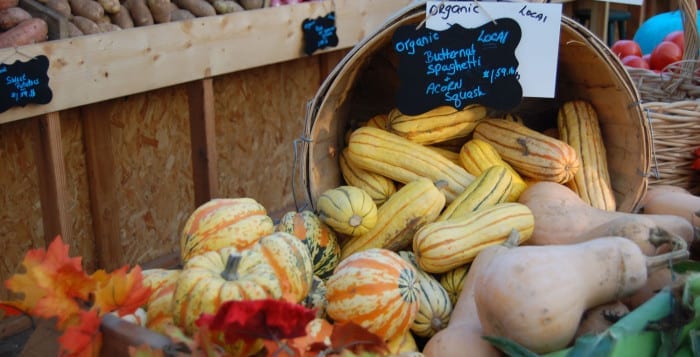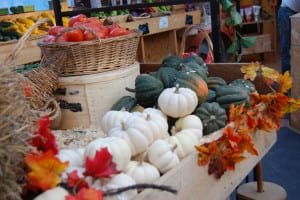Cucurbita, one of the Three Sisters, now grown worldwide

By Ellen Barcel
Squash, the genus Cucurbita, are grown today extensively throughout the world as a food source. They are one of the Three Sisters (corn, beans and squash), which were developed in the Americas and then taken by European explorers back home.
One of them, zucchini is so closely associated with Italian cooking that most people don’t realize that it is a native of the Americas, not Italy.
Squash are generally grouped in two categories, summer squash and winter squash. Most are vines and, although some are perennials, they are grown in temperate regions as annuals. The plants easily self-seed. I’ve even seen them growing along sidewalks from seeds that overwintered from decorative pumpkins left outside.
Incidentally, although gourds look similar to squash, they are not native to the Americas, but rather Africa. The same is true of melons. Gourds and melons, however, are related to squash (family Cucurbitaceae, but a different genus).

Squash, botanically are fruit, in the same way that tomatoes are. They are the ripened seed pod of the plant. Summer squash are harvested in summer, before the skin hardens. Summer squash include zucchini, yellow summer squash, scallop squash and yellow crookneck squash.
Winter squash are harvested in fall, after the skin has hardened. Therefore, these squash need to be peeled before use. Varieties of winter squash include hubbard squash, turban squash, pumpkin, butternut squash, acorn squash and spaghetti squash. We tend to think of winter squash as traditionally served at Thanksgiving (pumpkin pie and butternut squash in particular); however, spaghetti squash is available in supermarkets year round and is frequently roasted and served with tomato sauce, in place of spaghetti made from wheat to cut down on carbs.
Squash are known for their high vitamin content (particularly A) and trace minerals, making them an excellent addition to the diet.
My favorite butternut squash recipe takes butternut squash cubes cooked with sausage, thyme, salt and pepper in a skillet in chicken or beef broth with some onions until the sausage and squash are done.
Squash blossoms are edible as well. The ones generally seen in markets are zucchini blossoms. They are usually fried, but they can be baked, stuffed with cheese and spices, served with spaghetti or in soups. There are plenty of recipes online to satisfy all.
Since zucchini plants are so prolific, you’ll still get plenty of squash if you eat some of the flowers.
Squash grows in a wide variety of soil types but does need fertilizer (for example, composted manure). They produce the most fruits in sun. They grow in a soil pH of 5.5 to 7.5 (very acidic to mildly alkaline, with 7 being neutral). They can be grown in large containers, so if you have a small yard, you can put the container on a deck or patio.
According to the seed company Burpee, cucurbits don’t like to have their roots disturbed, so either plant them directly outside, start them in peat pots, which can be planted whole in the garden, or buy seedlings from a nursery, being careful not to disturb the roots. They also suggest adding fertilizer when the plants begin to blossom and set fruit since squash are heavy feeds (like tomatoes).
Like tomatoes, these are tender plants. They like warm soil (so don’t put them out too early in a cool spring) and need a steady supply of water, so be aware of weeks of little or no rain.
Winter squash can also be used as outdoor decorations in the fall. Some squash develop into really weird shapes naturally while others are accidental crosses between two varieties producing things like green pumpkins.
Ellen Barcel is a freelance writer and master gardener. Send your gardening questions to [email protected]. To reach Cornell Cooperative Extension and its Master Gardener program, call 631-727-7850.






